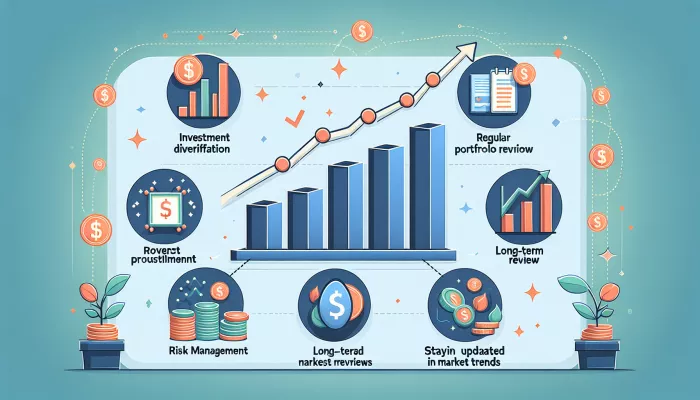

The secret to a successful strategy successful investment often lies in the ability to Diversify efficiently.
A diversified investment portfolio can help you minimize risk and seize opportunities across different sectors and asset classes.
Diversification is a risk management technique that mixes a wide variety of investments within a portfolio.
By spreading your investments across different asset classes, you can reduce the negative impact any individual investment can have on your overall portfolio performance.
Understanding the different asset classes is key to diversifying your portfolio. Consider including a mix of:
It is equally important to periodically adjust your portfolio to maintain the desired diversification.
This may mean reallocating assets as some become more burdensome or less desirable relative to the rest of your portfolio.
Finally, diversification does not eliminate all risk, but it is a powerful tool that should be leveraged to reduce risk exposure and seek more stable growth over time.
Remember: diversification does not guarantee profits or fully protect against losses in declining markets.
However, it is a prudent strategy to manage risk and pursue long-term investment goals.
For more information on how to effectively diversify your portfolio, consider exploring resources and investment tools offered by reputable financial apps and financial education websites.
Investing in dividend stocks is a favorite strategy among those looking to create a robust cash flow through the stock market.
By selecting stable and reliable companies, investors can benefit from regular dividend payments, which helps build passive income over time.
This type of investment is especially attractive for those looking for an additional source of income or a way to reinvest profits.
When looking for the best dividend stocks, it's critical to focus on companies with a history of consistent dividend payments.
Companies operating in less volatile sectors, such as utilities and consumer staples, are often good choices.
These tend to offer more stable dividend payments due to the predictable nature of their earnings.
A powerful strategy to accelerate the growth of your cash flow is to reinvest the dividends you receive.
This means using the dividends to buy more shares of the same company or other companies with dividend potential.
Over time, this approach can result in a composition, where dividends on dividends significantly increase the value of your investment.
When investing in dividend stocks, it is important to maintain a long-term perspective and understand that the stock market can be volatile.
While dividend stocks can offer a steady cash flow, they are not without risk.
Including the possibility of a reduction in the value of your investment or cuts in dividend payments. Diversifying your portfolio can help mitigate these risks.
Invest in dividend stocks is a proven strategy for building sustainable cash flow.
With research, patience, and a disciplined approach, investors can reap the long-term benefits this type of investment can offer.
When it comes to investing, many focus only on potential returns without giving due consideration to how optimize costs and fees to really maximize profits.
This optimization is crucial because even small fees can eat up a large portion of your returns over time.
Let’s discuss some effective strategies to keep your costs low and your profits high.
One of the first steps is to select brokers or investment platforms that offer low transaction fees or even free operations.
Several platforms now offer commission-free stock trading, which can make a big difference over time.
Mutual funds and ETFs (Exchange-Traded Funds) are popular options for diversifying investments.
But it is vital to pay attention to their annual management fees, also known as expense ratios.
Opt for funds with lower fees to ensure more of your money is working for you.
Investing through tax-advantaged accounts, such as a Roth IRA or 401(k) in the US, can help reduce your tax liabilities and increase your net returns.
These accounts often allow investments to grow tax-free, which can have a significant impact over time.
In addition to the explicit fees, be aware of the hidden costs, such as inactivity fees or account maintenance fees, which can erode your investments.
Read all the fine print before committing to an investment platform or fund.
While certain rates may seem fixed, there is often room for negotiation, especially if you are investing a significant amount of money.
Don't hesitate to contact your broker or fund manager to discuss the possibility of reducing your fees.
Unfortunately, many investors underestimate the cumulative effect of fees on their long-term returns.
Use online investment calculators to visualize the impact of fees on your investments over time.
This awareness may encourage you to take steps to reduce your fees now.